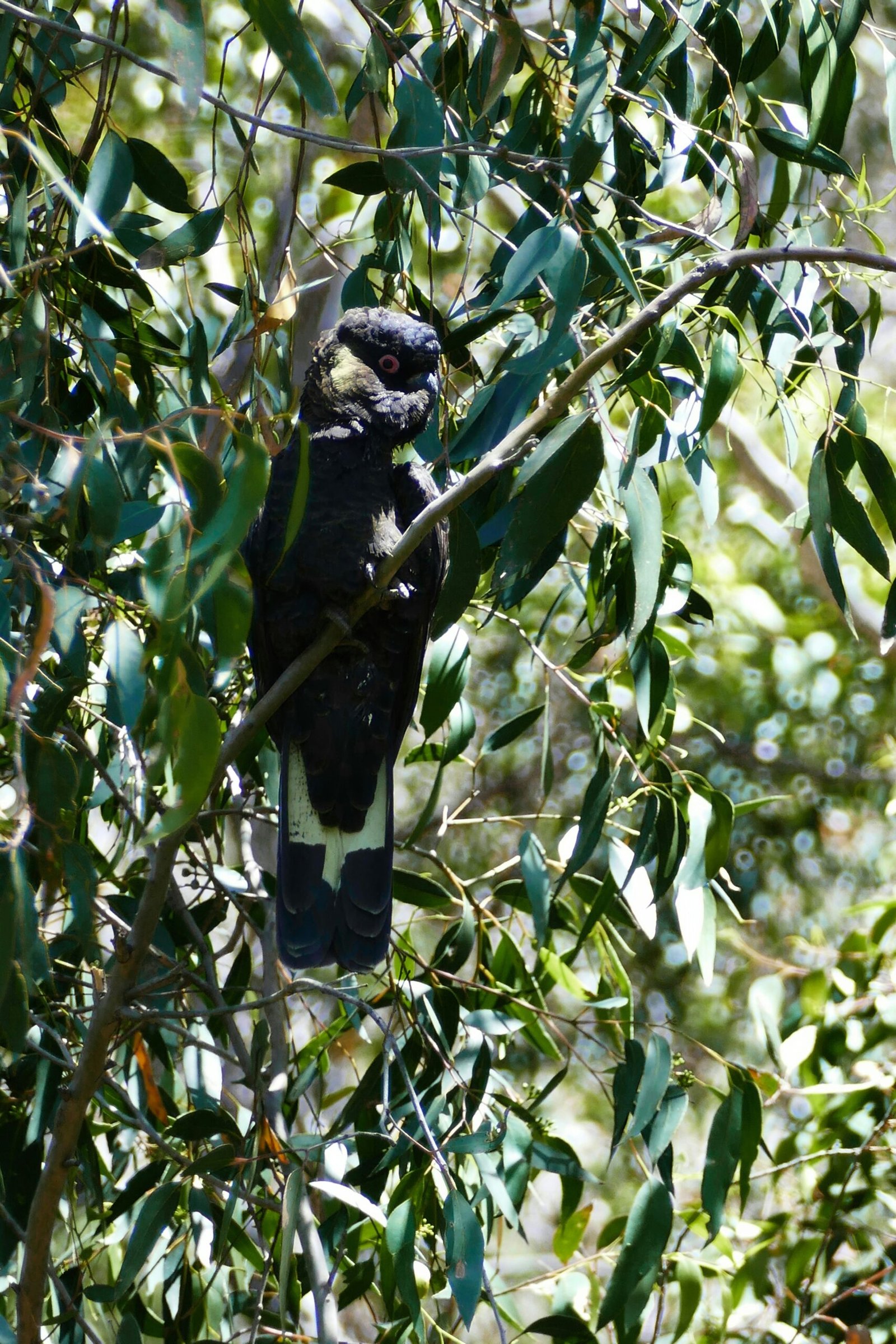Getting to know the bluebirds, who with their beautiful blue feathers and musical calling, are interesting to birders. These small birds that resemble thrushes favor living in open woods, fields, and gardens, including fruit and nut groves in the Niagara region of North America. The male of bluebirds is bright blue with rusty red chest while the female bears gray with touches of blue on wings and tail.
Knowledge of the nesting activity of bluebirds offers a worthy platform to analyse the life cycle and breeding patterns of these birds. Bluebirds usually inhabit open country, and they choose cavities for nesting that can be tree holes or their artificially created bird houses. These nests are then built with grass, pine needles and any other soft material which forms a comfortable environment to contain their eggs.
The bluebird reproduction occurs towards the beginning of spring with pairs using the same nest during their breeding season. Female bluebirds nest build three to five pale blue or white hued eggs in a specific clutch. The incubation period which plays a significant role in the development of the embryos is another interesting feature in the annual cycle of breeding of bluebirds. What can be done in this case is to watch and listen how long the bluebird eggs take to hatch so as to come up with strategies that will help in the protection and support of the beautiful bluebird.
As we move on to the detailed analysis of the hatching timeline it is necessary to note some background details about bluebirds and their conditions. Their nesting behavior is not only crucial for their existence, but they also shed light on the beauty and disposition of life. This analysis delves on the hatching process to understand the various obstacles faced and successes achieved by bluebirds during their transition from the eggs to the fledglings.
The Bluebird Mating and Nesting Process
The mating period is another interesting aspect of bluebirds’ life cycle that involves bright courtship displays and carefully planned nestings. Generally, bluebirds breed during spring although this depends on the climate as well as the region it is found in. During this period, the male bluebird sings sweet and performs impressive flight that exposes his colourful blue feathers in a bid to attract a female.
As soon as two partners become a couple, the choice of an appropriate territory for breeding becomes crucial. Bluebirds use cavities for nesting meaning they use tree hollows or man made nest boxes because they are secured from predators and harsh conditions. Male and female bluebirds help in choosing the site; however, the decision rests with the female bluebird.
Both members of the mating pair are involved in nest building. The female bluebird is typically responsible for building the nest, with the male bluebird helping to gather the materials. The nest is then plied with grasses, pine needles and other fine plant materials to construct a bowl like structure that offers adequate protection for the future eggs. The interior of the nest is also usually lined with softer materials, such as feathers or other soft things so that the eggs and the eventual young are comfortable and warm.
It is also important to note that the male and female bluebirds have separate tasks during this process. The male defends the territory and helps in obtaining construction materials, and the female is in charge of building the nest. This division of labor ensures that the nest is built well and in best location which gives the best survival chance to the eggs.
Knowledge of how the bluebirds reproduce and nest is quite useful in making sense of how they proceed to lay eggs and hatch them. It also reveals the precision of the bluebirds’ reproductive activities and the interaction between the male and female bluebirds before the incubation period and hatching of the bluebird eggs.
Egg Laying: How Many and How Often?
Birds of the blue variety, and with great singing talents, have an interesting way that they reproduce. Normally, there are between three to six eggs in a clutch of a female bluebird. The particular count may differ depending on several different conditions, including the type of their bluebird involved and the local climate. For example, the eastern bluebirds may lay approximately four to five eggs in each laying cycle and the western and mountain bluebirds may have slightly less or more.
This is a systematic reproductive process in the life of bluebirds. Female lays only one egg for a day, generally in the morning hours. This regular and daily method is carried on until the clutch is in place. Bluebird Female becomes close to the nest so that the eggs are safe and warm, however the full incubation does not commence immediately with the first egg. This synchronization is necessary so that all the eggs are hatched when the young ones will need similar type of feed and treatment from the mother.
It has been established that bluebirds can breed once within a given breeding season which lasts between late March and early August but may produce multiple clutches within this period. Laying usually occurs twice or thrice in a particular season or breeding period. However, the number of clutches within a breeding season and the total number of clutches may depend on some factors such as climate, availability of nests and food resources. Under favorable circumstances, some of the bluebirds might breed up to a fourth time, but this is not normal.
Knowledge of the nesting pattern among the bluebirds is essential for any attempt to grasp aspects of the reproductive timeline. Oviposition process provides a basis for other developmental stages such as incubation and hatching. Having information regarding the number of eggs, bluebirds lay, as well as the intervals between each of these eggs is useful in understanding their very rigid breeding schedules and practices that can assist in determining the gestation period to bluebirds eggs.
Incubation Period: What to Expect
The period when the bluebird eggs hatch is the most important section of the life cycle and it takes between 12 to 14 days. At this moment, incubation duties are performed mostly by the female bluebird in an effort to complete the incubation period. She is almost constantly present in the nest to regulate the temperature of the eggs, which mostly stays between about 98 to 100 degrees depending on the species of animal they are incubating for. This temperature is important to enable successful hatching and the proper development of the zygotes within the eggs.
In most cases it is the female bluebird who incubate the eggs and although the male bluebird has very limited role in incubation, he is expected to bring food to the female and defend the nest. He stays guard and ensure that no creature comes near the nest with wrong intentions about his family. This makes the load of roles fair to ensure that the female does not have the burden of foraging for food and at the same time incubate the eggs.
Hatched-parents show a great deal of commitment during the incubation period when the eggs are pilferaged. Female stays in nest virtually all the time and only gets out for a brief period to feed and for purpose of stretching. While the female is most of the times preoccupied brooding, the male is always on lookout duty for the nesting area in case of any invasion. It can be seen that this period of time, when there is cooperation and mutual endeavors, are crucial for the hatching of eggs of the bluebird.
It enlightens one as to how many days it takes for the bluebird eggs to hatch as well as the activity’s prevented by both parents during incubation period as part of balance in the natural world. The parent bluebirds take a lot of time in brooding the eggs and guarding them and this time takes between 12 to 14 days and these are crucial to the growth of the eggs so that when they hatch they will be strong and healthy. This period is not only characterized by the clock that counts the time to be completed but also the energy and proper union of the parents to be present agents in delivering their young ones into the world.
Factors Affecting the Hatching Time
Certainly, it would take some serious analyzation of various factors contributing to the time it takes for the bluebird eggs to hatch. The following factors, therefore, pervasively influence this process: Temperature for example is a very sensitive factor; the majority of organisms have their optimum temperature rang which is 98-100 degree Farenheit / 37-38 degree Celsius for incubation. Other critical factors are; If the temperatures are low or high, the hatching time may be affected and this may be either elongated or shortened. Solutions: This implies that there is another problem that would affect the survival rate of the chicks; this may be attributed to the fact that the weather sometimes is not consistent and this results to the inconsistency in the growth of the chicks.
Another reason that works hand in hand with gene flow and migration is past predation. Snakes, raccoons, and larger birds can be eye-sore to this nesting site, and negatively affect nesting as the incubating female is stressed and may desert her clutch. Particularly, this may lead to an extended hatching time or may cause eggs not to hatch at all in extreme scenarios. The contributions of Egg predators were also seen to impact on Reduced incubation since the adult bluebirds are always alert as they monitor their surroundings for any threatening Eggs predators.
Human interference can also be discussed as another factor. Citizen scientific lovers such as bird-watchers are sometimes unknown and may also disturb the nest, thus forcing the adult birds to desert the eggs occasionally. This disruption causes temperatures to drop and it also makes the eggs more exposed to predators, all of which increases the hatching time. Other risks from disturbed habitats include flooding, predation, competition for resources with other insects and nestling birds due to construction activities and habitat destruction that changes the environment in which bluebirds inhabit.
Also, it brings out that even when nest disturbances are caused by he natural forces such as storms, they can be acutely felt. Sturdy storms, strong rains, or timber falls, which can harm the nests and provoke birds to start new ones, also prolong incubation, it can vouchsafe. Habits evidently related to the rat such as often nest box inspections or in some ways a purposefully made moving can also cause stress equally thus lead to delays.
Overall, the hatching time of bluebird eggs depends on various factors that include the prevailing climatic conditions, predation pressure, as well as measures taken by man to favor the propagation of this avian species. Small fluctuations of temperature and lack of interference are important for proper hatching of eggs and the stabilization of the babies’ conditions.
Signs of Imminent Hatching
Therefore, it is important to detect the signals that can be a sign that bluebird eggs are about to hatch among other bird eggs. Towards the hatching period, both, behavioral signs and physical features are noticeable which clearly point to signs that newborn chicks are imminent.
In as much as there were no recorded observation on the ability of the parent bluebirds to communicate, there was perhaps the most behavioral shift in care exhibited by the parent bluebirds to constantly tending to the nest. During the incubation period, the parents often revisit the nest and warm the eggs and will stay closer to the nest when the incubation period is almost over. This added precaution guarantees that the eggs are maintained at the correct temperature and is shielded from any adverse contaminations. Also, the parents start building better nests in anticipation of the arrival of their chicks through increasing their hunt for food. It is important so as to prepare for feeding since the young ones hatched from the bluebird pair will need to be fed constantly.
In addition to these behavioral changes, several physical factors also suggest that hatching is in the process of happening. Egg pipping is one of the first body signs which signal that chicks are on their way out of the shell. this describes that action where the chick uses a small and feeble outgrowth of the beak, which is commonly termed the egg tooth to crack the shell. At the beginning of the process, it is possible to observe, with the naked eye, very thin pits or small openings on the outermost part of the egg’s shell. These cracks gradually widen up as the chick tries continuously to peep out of the shell. Looking at those cracks to identify that hatching is imminent in the following day or two.
These signs must be understood so as to know those individual who want to know the time it will take for bluebird’s eggs to hatch. An elaborate observation of the various signs such as the change in behavior in parent birds and the hatching of the eggs by checking on them physically like checking for signs such as pipping can be used to estimate the hatching time accurately. Besides helping to find more bluebirds, this knowledge also helps to improve the direct observation of the situation and also helps to guarantee the safe conditions of the birds’ fledglings.
The Hatching Process: Step-by-Step
It is really interesting on how the life cycle of poultry starts in an egg, and then to a chick. This paper explores the different phases characteristic of the hatching process in making a determination of the time that it takes for bluebird eggs to hatch. Overall, eggs in bluebird species take about 12 to 14 days for incubation if the eggs were laid. As the time comes closer, the chick starts the process of trying to crack through its egg’s shell, termed as pipping.
Pipping involves the use of a small sharp structure called the egg tooth at the lower beak to scratch a line around the circumference of the egg’s surface. If it takes several hours to a full day the stage is referred to as a ‘sustained’ wave. The chick turns inside the egg, widening the opening through constant rotation till it forms a circular hole. This phase is the most tiresome and seems to demand much power from the chick after which it has to take breaks.
As the chick continues to peck, some scuffle and finally knocks the upper part of the shell and thus completes eating the shell. This critical moment generally takes place within 24 hours of pipping, suggests size variation. The chick is now a pale, fragile construct and is still slippery and wet but then emi- shaded with down soon appearing fluffy.
In this process, one of the most significant resources is the help of parents. Though it solely depends on the pair of adult bluebirds, they might help in scraping off pieces of eggshell or exerting some pressure to assist in pushing the chick out. However, most of the development is carried by the chick itself, which needs to develop the physical capacities required to exist beyond the egg shell.
From the initial crack up to the time the chick coming out it usually takes a day or two. This way the chick will be able to meet the initial brief exigencies of life outside the egg scale such as feeding and heat conservation with the help of its parents. In contrast, it is critical to know this time line and the processes can help to capture a broad view of how long the bluebird eggs take to hatch.
Post-Hatching Care and Development
Procedures and methods taken in the bluebird nest is a culmination of the mum bluebird carrying eggs before hatching those eggs, the real focus then shifts to how to ensure the bluebird chicks which have hatched will grow to be productive and healthy. Pigeons also involve both parents in the rehabilitation of their young as soon as the young ones have hatched. This period takes between one to twelve hours post hatching, the time when the mother helps the chick to break the shell and being cold dried. The father ensures he supports the wife by protecting the nest and also looking after the needs of the family by hunting for food.
In feeding practices, both the parents swap in collecting insects and other small invertebrates to provide the chicks with their meals. This makes them feed bluebird chicks quite often, in every 15-20 minutes depending on the time of the day and this diet has many proteins that helps in the quick growth of the chicks. At first, the parents may either spill up the previously consumed food to make food mixture that is easily chewable for the chicks.
The development stages in the life cycle of bluebird chicks are too phenomenal. In the first week, the part of the downy starts to turn to pin feathers, and in the second week, their eyes will open and the feathers start to grow. During the third week there is quick development and the chicks begin to resemble the fully grown birds. They are still dependent on their parents to feed them but this is the time they begin to practice the use of their wings for flying before they fledge.
Flying away or fledging, when the chicks are able to fly away from the nest, lasts 17-21 days after the chicks have hatched. During this period, the parents are still providing the fledglings with food but are also training them to go out and look for the food themselves. This stage is important as it can determine the number of youngsters that are fully fledged and not confined to their nest any more.
It may interest you to know the duration taken for bluebird eggs to hatch but that is just a small fraction of the reproductive cycle for the bluebirds. It is just as important to extend hand feeding and protection to these little ones so that they can mature into healthy birds and pass on the same. The feeding is a prominent part of the process and is followed by the fledging of the young; each step is managed with sheer precision by the parent birds and this goes on to show just how well synchronized nature is, in raising young lives.
External Resources for Bluebird Enthusiasts
As it has been illustrated above, there is a vast amount of information regarding bluebirds and for those who would like to gain a more detailed insight into this matter, there are numerous resources available outside the sphere of this work. Knowledge of how long bluebird eggs take to hatch lays a good foundation on these lovely creatures once you aspire to know more about them. Here are some reliable links to web resources, bluebird conservation organizations as well as numerous scientific articles which will provide you with a lot of information about the lives, habits and conservation of bluebirds.
- North American Bluebird Society (NABS): This American bird is popularly associated with the North American Bluebird Society (NABS) whose mission is to protect bluebirds and other native cavity nesters. On the website of the Bluebird Project, the information is divided into the following sections: Education, Research, and Resources; a section that offers troops of educational material, research papers, and practical instructions for bluebird lovers. Check out what they are speaking about at North American Bluebird Society.
- Cornell Lab of Ornithology: Founded to carry out extensive bird studies, the Cornell Lab provides observations on bluebirds’ breeding and hatching schedules. To get additional information about them, check out All About Birds.
- Bluebird Recovery Program: It provides an opportunity for bluebird conservation by promoting conservation practices and avian awareness. On the pages of their website, there is information on nesting and hatchling rates of bluebirds. For more details about the program regarding Bluebird Recovery Program.
- Journey North: Specialized research program that provides information on the movement and annual changes of presence of different bird species inclusive of the bluebird. Having observed these bluebirds, participants can make contributions of such observations while accessing many data on the behavior of these birds. Journey North — Get Involved
- Scientific Studies and Journals: If someone cares to pursue further literature about ecology and behaviour of these little charismatic birds, several scientific journals have articles to offer. Some of the internet resources students can use to access many of the articles that are in peer-reviewed journals include JSTOR and ScienceDirect.
The resources as presented offer a good source of information and can be a springboard for sourcing more information on bluebirds and other related studies. When following these links, the bluebird enthusiasts learn much more in more detail about how long it will take for bluebird eggs to hatch and other parts of the bluebird life-cycle.
Conclusion: The Joy of Bluebird Watching
Theis one of the beauty of nature where bluebird eggs are laid and it normally take 13 to 15 days for the eggs to hatch. This is the stage when the parent bluebirds undertakes a process of incubation during which the eggs are taken care of. The hatchlings are then provided copious parental care to prepare them for fledging, which happens within 17 to 21 days of hatching. Knowing how long it takes for the eggs to hatch provides an insight of the dedication and the many complex stunts of these eloquent birds.
It is interesting and enjoyable to observe bluebirds from the bird watcher’s perspective while it also entails the appreciation of the natural world and the great chain of being. The two are colourful birds but particularly attractive because of their blue colouration and sweet singing making them otherworldly. Any person, organization or agency keen on enhancing the numbers of bluebirds, thus increasing the species’ population, would need to provide safe nesting boxes and also rid the habitat of pesticides. Further, some simple methods of management can keep these nest boxes productive which in turn increases the chances of survival of the bluebird chicks.
It is for this reason that we wanted to design this site to help you sit and watch some bluebirds and be reminded of the State’s ecosystem. hus even if you are just a passerby interested in birds, being able to watch hatchlings is intellectually enriching and emotionally fulfilling. Educate others on your travel and observation into the bluebird and promote more people to become enthusiasts of birds. In this case, people who practice bird watching get to contribute to the conservation measures that aim at maintaining the populations of bluebirds for generations to come.







